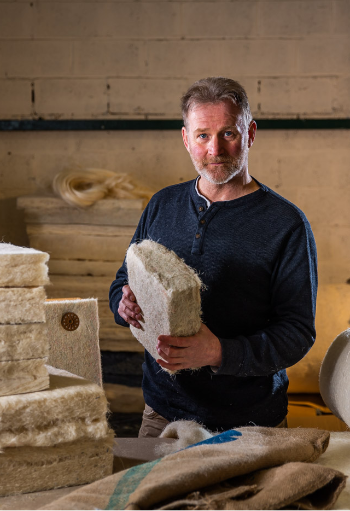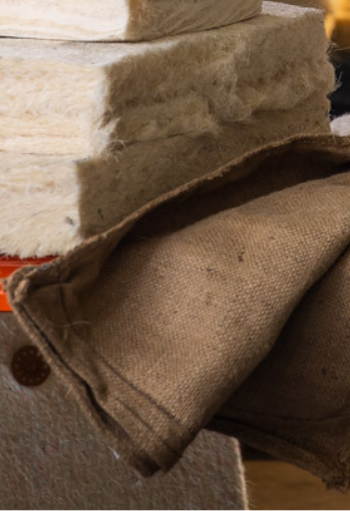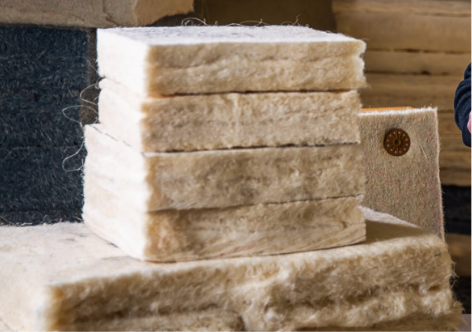
THE EAST AFRICA SISAL COMPANY
Ethical circularity
Drought-resistant and highly sustainable, fibre made from the sisal plant packs an environmentally friendly punch. So much so that The East Africa Sisal Company use it as a base material for their sustainable insulation products. Sourcing this wonder material from small-scale farmers in East Africa, the business has been ethical from the start. Now, it’s going circular.


How will The East Africa Sisal Company’s circular model work?
It’s all about recovering materials. One material in particular, of course. “We thought about what sisal was already in circulation and in landfills, and could be used,” explains Founder, John Ferguson.
Coffee sacks were a clear choice. Sisal coffee sacks are typically used for sending green coffee beans to the UK. Once the beans have been roasted, the sacks are discarded and sent to landfills. Sisal is biodegradable – but waste is waste.
The East Africa Sisal Company will blend the recycled coffee sacks with the sisal they source from East Africa to create their final base material. This kind of circular model is called resource recovery. It unlocks hidden value in something that would otherwise have been disposed of.
How is this beneficial from a business perspective?
“In general, it’s about making new material streams available at a low cost. Sacks – or any other waste stream that’s going into landfill – are either cheap or free.”
When it works, the financial advantage is pretty simple... Reduce raw material costs: boost your profits.
What inspired you to make this change?
“When we heard about Zero Waste Scotland and the circular economy concept, it was really interesting, and fitted with our values,” explains John.
What help have Zero Waste Scotland provided?
“I’ve had lot of practical support from them,” says John – in reference to the Circular Economy Business Support Service . “I’ve now received a development grant to help get us exactly where we want in terms of proving the feasibility.
“With our own resources alone, we could go part way to proving this concept. But the development grant allows us to clearly prototype and demonstrate the exact kind of products that we’re considering.”

Have there been many challenges in your shift to circular so far?
Logistics. “Figuring out how to gather all the materials together – you don’t want to be doing that in an inefficient way,” says John. Access to machinery has been another issue, as the necessary processing equipment isn’t always available in Scotland.
In terms of sustainability and climate change, how do you view the current landscape in Scotland?
“Climate change is the biggest challenge of our time,” says John. “When you look at the US, it’s discouraging to hear about people denying climate change. But the Scottish government have taken a real lead on this in lots of ways – in terms of things like renewable electricity generation, electric vehicles and looking at making housing stock more energy efficient. They’re making lots of resources available.”
What steps can people and businesses take to help reduce waste?
Be resourceful. “People consider some things to be waste, when they’re actually a resource,” says John. “Having worked in Africa where there is a huge lack of resources, you notice that everything is valued more.
“I think it’s good for people to be challenged on what they see as waste.”
